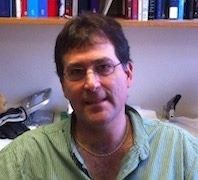Physics teachers head back to class
Federally funded QuarkNet Program links teachers with university researchers

Even though it's summertime, eight Central New York high school physics teachers are continuing their growth in the classroom by attending class on the SU hill.
The teachers are taking part in something called QuarkNet. "QuarkNet is an outreach project intended to help assimilate some of the ideas of particle physics to teachers who can then bring these ideas to their classrooms, " says Professor Steve Blusk, director of undergraduate studies in SU's physics department. "Many of these teachers have little experience with particle physics, yet they are asked to teach the subject. So this workshop provides a forum for them to meet with us, work through some activities that we design, and discuss some of the latest news in particle physics.”
To help them gain a better understanding, the teachers are building a cosmic ray detector. Thanks to a grant from the National Science Foundation and U.S. Department of Education, the teachers will be able to bring the $6,000 device back to their home district for students to use in the classroom. But what the teachers and their students gain is much more.
"It improves teachers' understanding of how various technologies are used in the field of particle physics," says Blusk. "They'll bring that knowledge back to the classroom to help their students understand it, too."
Among those taking part is Cindy Lamphere, a physics teacher from Port Byron. "I think it's fantastic," she says of QuarkNet. "It exposes us to a lot of research. There are lectures in the morning and labs in the afternoon. It helps bring real-life experiences back to the students and has been an incredible program to take part in.”
Assisting Lamphere in building the cosmic ray detector is Ranald Bleakly, a physics teacher from Weedsport, and, along with Fayetteville-Manlius teacher Josh Buchman, one of two founding members of the group. "Personally, I get exposed to particle physics research and gain a better understanding of what particle physicists do. What we're trying to do here is show students something in the atmosphere they can't actually see. Through this device you can.”
For Syracuse University, there are also benefits. "It's about making connections with teachers who may, in turn, tell their students about the quality faculty we have here at SU," says Blusk. "This is one way we help reach out and give back. There are other benefits, as well. In science, this is how one learns, not only from a textbook, but also as part of a collaborative environment. There are a lot of trials and tribulations. You try something and it doesn't work, then you try something else. You learn quickly that it's not a straight path from A to Z--sometimes you zig, you zag, sometimes you go backwards. You don't get this just through a textbook.”
Housed in SU's College of Arts and Sciences, the Department of Physics has been educating students and carrying out research for more than 125 years. Graduate and undergraduate opportunities are available in fields ranging from biological and condensed matter physics, to cosmology and particle physics, to gravitational wave detection and astrophysics.
Media Contact
Keith Kobland
